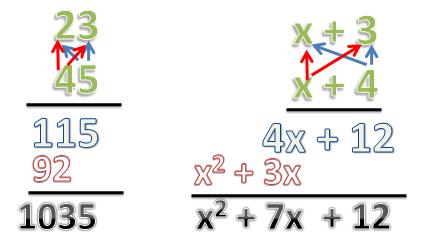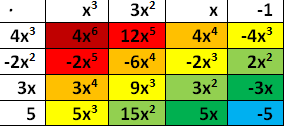The Distributive Property
Given numbers a, b, and c, we are familiar since elementary grades that a(b+c) = ab + ac. This is what we call the distributive property of multiplication over addition. From commutative property, we also know that xy = yx; therefore, (b + c)a = a(b+c).
Knowing this property, we can do a lot of mathematical operations. For example, we do not need to memorize FOIL (First-Outside-Inside-Last) , one of the rote strategies (no need to memorize) in multiplying binomials. That is, in (a + b)(x + y), we multiply a(x + y), multiply b(x + y), and then add both terms giving us a(x + y) + b(x +y) which is equal to ax + ay + bx + by. If we have solved this, we can definitely solve (a + b)(x + y + z) and also (a + b + c)(x + y + z) and multiplication of polynomials of many terms.
The distributive property also works for multiplication and it is actually the idea behind multiplication of real numbers. For example, in the operation 23 times 45, we use the distributive property to multiply the digits. First, we multiply 5(20 + 3) and then we multiply 40(20 + 3) and then add them both. It is also the same as (20 + 3)(40 + 5) = 20(40) + (20)(5) + 3(40) + 3(5) = 1035.
Another example on how to multiply algebraic expressions as shown below. Notice the similarity of both methods, and how it can be extended to multiplying numbers with more than two digits and algebraic expressions with more than two terms.

For greater number of terms, the box method might be of help. If we want to multiply x3 + 3x2 + x – 1 and 4x3 – 2x2 + 3x + 5, we can still use the strategies that we have done above, but placing it in a table as shown below might be more convenient.

In the table, expressions in cells with the same colors have similar terms and therefore can be added.
On a final note, teaching strategies to students such as short cuts and mnemonics are not quite advantageous because we are depriving them of discovering these strategies on their own. After all, that’s what mathematics is all about. Finding the shortest path; finding the most elegant solution. If we as teachers find it for them, then we leave them with nothing to do.